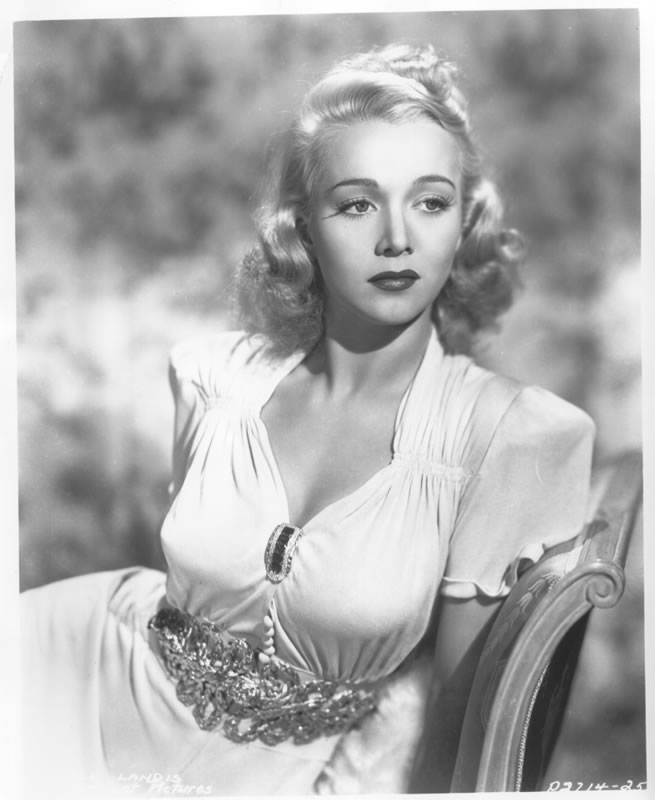
The Landis photograph of Chronicle 280 made real to me as never before Proust’s description of things of beauty–whether a petite phrase of music or an 8×10 photograph–as hostages that guarantee our lives and deaths against meaninglessness. The necessary “littleness” of such things was the subject of Douglas Collins’ recent article in Anthropoetics.
Yet Proust also observed in our most meaningful experiences an internal mechanism of self-diminution: what he calls les intermittences du coeur, the discontinuities of emotion. The greatest beauty cannot remain with us at every moment, just as the most powerful love cannot sustain us at every moment. Perhaps then I should take a more cautious tone in affirming the meaningfulness of the things that have meaning for me; perhaps I should become what Richard Rorty calls a “liberal ironist” who refuses to make the Kantian affirmation that my experience at this moment is a universal model for all. In the terms of Archilocus’ dichotomy, revived by the late Isaiah Berlin, Rorty would have us all become foxes. The hedgehog conjures up for us the fanatical image of Osama bin Laden–foxy, perhaps, but no fox he.

Chronicle 279 explained antisemitism as an inevitable reaction to the Jews’ status as the first monotheists–a thesis some rushed involuntarily to confirm by accusing me of arrogantly asserting Jewish superiority. Likewise, I pointed out that the United States was universally envied for its dominant role in the contemporary market system, a statement of fact that only provided new ammunition to the enviers. Thus in my last two Chronicles I have claimed (1) to belong to the religion that “objectively” made the greatest theological advance in (Western) history; (2) to live in the nation that “objectively” dominates the contemporary exchange system; and (3) to be the discoverer of history’s most “objectively” beautiful image. Yet for chutzpah none of these claims holds a candle to the ultimate hedgehog hypothesis that purports to define the parameters of the originary scene of human language. Just as no one can think about monotheism without reference to the Jews, no one should think about language origin without referencing the originary hypothesis; that is the core of Generative Anthropology, which this website exists to promote.
Since I have now reached senior citizen status, it is surely too late to change into a fox. All I can do to make my peace with the world is to hope that foxdom has some need for my particular strain of the opposing species: hedgehogs who attempt to persuade on rational rather than dogmatic grounds. In honor of the great hedgehog philosopher, der Igel Hegel, I will call myself a dialectical hedgehog.
At first glance, dialectical hedgehogs don’t seem very useful in the great scheme of things. The bin Ladens command our attention, whether through sheer terror or simply as points of resistance to the market’s circulatory penetration. In the global exchange system, dogmatic hedgehogs are squeaky wheels, and so get lots of grease, whereas the dialectical hedgehog who not only believes he is right but has the supplementary arrogance to think he can demonstrate it to others is dismissed as a troublemaker.
But can I renounce the need to impose upon the world the unique significance of my own experience? I contemplate my Landis photograph, enthralled with my discovery, but this enthrallment is incomplete without the assent of those who have not yet acknowledged it. It is the dynamic of persuasion that drives the hedgehog dialectic; yet the very violence of my assertion is an obstacle to my reader’s conviction. The foxy tack, so prized in our time, is to deny all satisfaction on the model of the dandy of old: nihil admirari. Emulation of the refusal of desire is the safest rivalry.
I know as much about irony as anyone, but the irony of desire can be enjoyed only in the brotherhood of ironists, less enchanted with their object than with each other. The Bronx Romantic who conceives his ideas in solitude gains no benefit from mocking the certitudes that inform his quest. On the contrary, when they waver, he must uphold them through an act of faith. There may be moments when my portrait seems less beautiful, when its exquisite equilibrium seems broken; yet in the Proustian spirit of the dying Bergotte before Vermeer’s petit pan de mur jaune [little yellow wall], I affirm this image as my consolation for life and death.
It is perhaps inevitable that the hedgehog who belongs to both the tribe of the discoverers of God and the nation of the masters of the global economy, and whose anthropology situates itself at the unique point of human origin, should one day declare this specific trace of this specific moment to be the nec plus ultra of beauty. How even begin to prove such an assertion? The proof can only be an act of faith–and of love, in a certain sense.

Our photograph is an article of commerce produced in a time when high art denied beauty all prestige, when only a Hollywood glamour photographer would create an image with an eye to making it beautiful. Beauty is not a stable state; esthetic desire circulates between the image and the imaginary figure it engenders. The modernist rejection of “mimetic” art is motivated by the refusal to create a representation that one could conceive at any point within this esthetic oscillation as an object of desire in the real world. Such an image might be, Ô horror, marketable. One might find in it a simple likeness, not a sign but a substitute object of desire, a form of pornography. I can defend Landis’ portrait against this accusation, but I cannot deny that someone might find in it a promise of sexual satisfaction. The viewer of Les demoiselles d’Avignon runs a far lesser risk of such contamination.
The market-terror of modernist high art, no longer willing or able to take its content from the central domains of human experience, leaves popular art, for which the satisfaction of desire was always the aim, free to expand into high art’s traditional terrain. Although our photographer took other, far less remarkable pictures of Carole in the same chair and dress, in this one shot, by chance or design, he found within the conventions of the glamour portrait the means of esthetic transcendence.
Yet this photograph is not famous; it is no longer even available commercially. Its beauty lacks the external trappings of the popular sacred. As a popular art, glamour photography depends for its marketability above all on its subject. On my last visit to eBay, there were 20-odd Landis items and nearly 6000 Monroe items. Save for a few scattered cultists and aged veterans, there is no Landis-ness to compete with Monroe-ness; a picture of Carole Landis has little cultural iconicity. Perhaps only a Bronx Romantic, the most stubborn variety of dialectical hedgehog, could see in it the purest of all revelations of beauty, one whose esthetic perfection is guaranteed by the very vulgarity of its origin.
Few of the legendary actresses of Hollywood were really beautiful; none was a match for Landis. Her portrait’s pride and sadness would tell this even to one who knew neither her name nor the time and place of her life. The expression “achingly beautiful” conveys the spectator’s shared experience of this paradox of presence and absence. It is painful to witness great beauty, but we are proud of our pain. We are unworthy to possess the sublimely beautiful, but proud to accept our unworthiness.

When an individual’s “judgment of taste” affirms its universality, the very affirmation leads to conflict, since the second person to come along, even if he shares the taste of the first, can only passively acknowledge the truth of the other’s judgment. In a democratic world, collectivities can unite around shared ideas of the beautiful only if cultural iconicity ensures that no individual be able to define this beauty for himself. To become Monroe or Madonna requires that each member of the audience be faced with a fait accompli. This cannot be done simply by blanketing the world with publicity, although it cannot be done without it. Just as Landis bears in herself the sign of superlative beauty without need for comparison with others, so the icon must bear in herself the sign of a mass appeal that permits of no individual overbidding. (These remarks apply to male icons as well; but outside the gay community, men, even Leonardo di Caprio, are simply not beautiful.)
The Marilyns, Madonnas, and Britneys exude a centerless, anonymous attraction; Landis does not. No doubt she posed for plenty of (relatively tasteful) cheesecake pictures; the very existence of our portrait depends on her value as at least a minor icon. Landis in her day was somebody; in Four Jills and a Jeep the flyer she will later marry (and, in real life, divorce) falls in the mud in shock on hearing her say her name. But Landis’ beauty was too real, too variable and vulnerable as well; she could never become like Marilyn a Barthian myth, a sign of herself. Her photographs can be artificial, but the artificiality remains on the surface, unbankable. Terms like “busty” and “curvaceous” were applied to Landis, but they were unworthy of her then as they are now. Perhaps you will say that my sensibilities are not those of the 40s, but I think we all have the same sensibilities; we only value them differently. We can give in to vulgarity or we can resist it; we can aspire to transcendence or reject it as an affectation. Landis’ beauty speaks not to the fox but to the hedgehog.

What use might there be for a dialectical hedgehog? In a system of emulation, his denial of the possibility of rivalry incites rivalry in transcendental form as the desire to annihilate his very being. If he has discovered the One God, the One Nation, the One Beauty, then there is nothing left for other mortals but the irrationalities of antisemitism, anti-Americanism, even, God forbid, anti-Carolism. But this reasoning falsely implies that all but the Bronx hedgehog are willing to sell their souls either to foxiness or to a categorical dogma. There is a hedgehog in us all. Rather than either suppressing it or turning it to fanaticism, we would do better to teach it the art of dialectic; the fox-chatter of the liberal ironist is not real dialogue.
How can more than one dialectical hedgehog escape the ineluctable master-slave dialectic of the Hedgehog philosopher? But how do people deal with the Jews? Not everyone is an antisemite. The Jews were there first, but one recognizes their historical priority and moves on; the Jew or non-Jew who does not will contribute nothing positive to the 21st century. Nor is everyone anti-American. The global market, once created, is beyond nationality, as are one’s personal accomplishments. The correct response to the dialectical hedgehog is neither blind resentment nor struggle to the death but acceptance and detachment; we live in an expanding universe with ever more to discover and invent, ever more syntheses to accomplish. We each need the courage to be dialectical hedgehogs in our own sphere; the Bronx Romantic has no pretension of being the first or greatest of the species.
Nor should anyone begrudge me my portrait. It is mine because it is everyone’s, one at a time rather than collectively–as beauty is supposed to be. Until recently, this photograph sold on the Internet for under $7.00, shipping included–the esthetic bargain of the millennium. No, I am merely reminding my fellow hedgehogs–we are all hedgehogs underneath–that hedgehog beauty is true beauty, the saddest and most exhilarating. For this discovery, dear reader, you should thank Carole Landis, not me.


